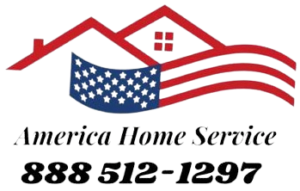-
Table of Contents
- Chimney Maintenance, Repair, and Cleaning
- Why Chimney Maintenance is Essential
- Chimney Repair: Addressing Common Issues
- Effective Chimney Cleaning and Creosote Removal
- Fireplace Safety Tips
- Related Services
- FAQ
- How often should I have my chimney inspected?
- What are the signs that my chimney needs repair?
- Can I clean my chimney myself?
- What is creosote, and why is it dangerous?
- Conclusion
“`html
Ignoring chimney repairs can lead to costly structural damage, increased fire hazards, and higher energy bills. Protect your home and wallet by addressing issues promptly. Don’t delay needed repairs—schedule a professional chimney service today.
Chimney Maintenance, Repair, and Cleaning

Ensuring your chimney is in top condition is crucial for fireplace safety and the overall health of your home. Regular chimney inspections, maintenance, and cleaning can prevent hazardous situations and costly repairs. This article will guide you through the essentials of chimney care, including chimney maintenance, chimney repair, and creosote removal.
Why Chimney Maintenance is Essential
Chimneys play a vital role in venting smoke and gases from your fireplace out of your home. Over time, soot and creosote can build up, leading to blockages and potential fire hazards. Regular chimney inspections help identify these issues early, ensuring your chimney functions efficiently and safely.
Chimney Repair: Addressing Common Issues
Chimneys can suffer from a variety of issues, including cracked masonry, damaged flue liners, and faulty dampers. Timely chimney repair is crucial to prevent these problems from escalating. Addressing these issues promptly not only enhances safety but also extends the lifespan of your chimney.
Effective Chimney Cleaning and Creosote Removal
Creosote is a highly flammable substance that accumulates in chimneys over time. Regular creosote removal is essential to prevent chimney fires. Professional chimney cleaning services ensure thorough removal of creosote and other debris, maintaining optimal airflow and safety.
Fireplace Safety Tips
To ensure fireplace safety, always use seasoned wood, avoid overloading the fireplace, and install a chimney cap to prevent debris and animals from entering. Regular maintenance and cleaning are key to preventing dangerous situations.
Related Services
In addition to chimney services, consider our air duct cleaning and dryer vent cleaning services to improve your home’s air quality and safety.
FAQ
How often should I have my chimney inspected?
It is recommended to have your chimney inspected at least once a year, especially before the start of the burning season.
What are the signs that my chimney needs repair?
Common signs include visible cracks, water leaks, smoke entering your home, and unusual odors. If you notice any of these, contact a professional for a chimney repair assessment.
Can I clean my chimney myself?
While some minor cleaning can be done by homeowners, professional cleaning is recommended for thorough creosote removal and to ensure all safety standards are met.
What is creosote, and why is it dangerous?
Creosote is a byproduct of burning wood that accumulates in chimneys. It is highly flammable and can lead to chimney fires if not regularly removed.
Conclusion
Regular chimney maintenance, repair, and cleaning are essential for ensuring the safety and efficiency of your fireplace. By addressing issues promptly and maintaining a clean chimney, you can enjoy a warm and safe home environment. For professional services, contact American Home Service today.





